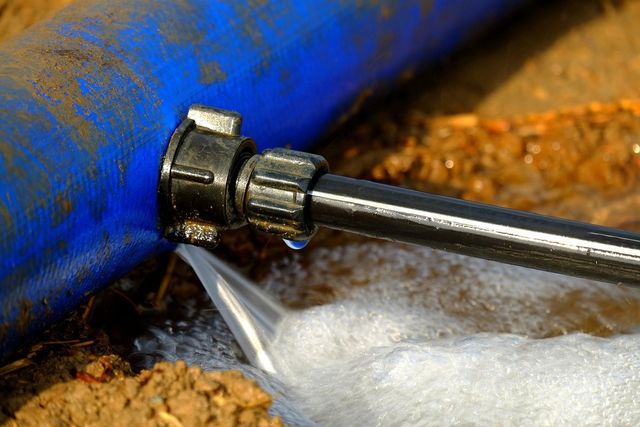Just how to Discover and Repair Water Leaks-- A Comprehensive Overview
Just how to Discover and Repair Water Leaks-- A Comprehensive Overview
Blog Article
Everybody has got their personal theory with regards to Top leak detection hacks.

Early detection of dripping water lines can minimize a possible calamity. In addition to conserving you cash, it will certainly minimize the worry and also stress. The minute you locate a leakage, calling your plumber for repair services is the very best option. Some small water leakages may not be visible. If you can not spot it with your naked eyes, below are some hacks that aid.
1. Take A Look At the Water Meter
Checking it is a proven means that aids you uncover leakages. If it relocates, that suggests a fast-moving leakage. This means you might have a slow-moving leak that might also be underground.
2. Inspect Water Consumption
Assess your water expenses and track your water intake. As the one paying it, you ought to observe if there are any kind of disparities. If you spot sudden changes, regardless of your consumption coinciding, it suggests that you have leaks in your plumbing system. Keep in mind, your water costs need to fall under the exact same range each month. An unexpected spike in your costs suggests a fast-moving leakage.
At the same time, a consistent boost on a monthly basis, despite the same behaviors, reveals you have a slow leakage that's also gradually escalating. Call a plumber to completely check your property, especially if you feel a cozy area on your floor with piping underneath.
3. Do a Food Coloring Test
When it comes to water consumption, 30% comes from commodes. If the shade somehow infiltrates your dish throughout that time without flushing, there's a leak between the storage tank and dish.
4. Asses Outside Lines
Do not forget to check your outdoor water lines as well. Should water permeate out of the connection, you have a loose rubber gasket. One small leak can squander loads of water and increase your water bill.
5. Check as well as Analyze the Situation
Property owners should make it a routine to examine under the sink counters as well as even inside cabinets for any bad odor or mold development. These two red flags indicate a leakage so punctual focus is needed. Doing regular assessments, even bi-annually, can conserve you from a significant problem.
A lot more importantly, if you understand your residence is already old, keep a watchful eye on your heaters, pipes, pipes etc. Look for stainings and also weakening as many pipes as well as devices have a life span. They will also naturally deteriorate as a result of damage. If you presume leaking water lines in your plumbing system, don't wait for it to escalate. Call a professional plumber immediately so you don't end up with a horrible mess in your home.
Early discovery of dripping water lines can alleviate a prospective disaster. Some small water leaks might not be noticeable. Examining it is a proven method that assists you find leakages. One small leak can waste bunches of water and surge your water costs.
If you believe leaking water lines in your plumbing system, do not wait for it to escalate.
WARNING SIGNS OF WATER LEAKAGE BEHIND THE WALL
PERSISTENT MUSTY ODORS
As water slowly drips from a leaky pipe inside the wall, flooring and sheetrock stay damp and develop an odor similar to wet cardboard. It generates a musty smell that can help you find hidden leaks.
MOLD IN UNUSUAL AREAS
Mold usually grows in wet areas like kitchens, baths and laundry rooms. If you spot the stuff on walls or baseboards in other rooms of the house, it’s a good indicator of undetected water leaks.
STAINS THAT GROW
When mold thrives around a leaky pipe, it sometimes takes hold on the inside surface of the affected wall. A growing stain on otherwise clean sheetrock is often your sign of a hidden plumbing problem.
PEELING OR BUBBLING WALLPAPER / PAINT
This clue is easy to miss in rooms that don’t get much use. When you see wallpaper separating along seams or paint bubbling or flaking off the wall, blame sheetrock that stays wet because of an undetected leak.
BUCKLED CEILINGS AND STAINED FLOORS
If ceilings or floors in bathrooms, kitchens or laundry areas develop structural problems, don’t rule out constant damp inside the walls. Wet sheetrock can affect adjacent framing, flooring and ceilings.
https://www.servicemasterbyzaba.com/blog/how-to-detect-water-leakage-in-walls/

We hope you enjoyed our excerpt about Top leak detection hacks. Thanks so much for spending some time to read our article post. Sharing is good. You won't know, you will be helping someone out. Thanks so much for your time spent reading it.
Report this page